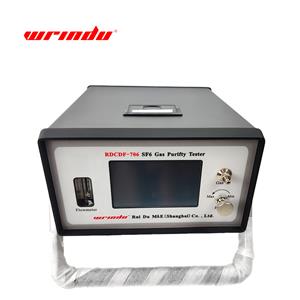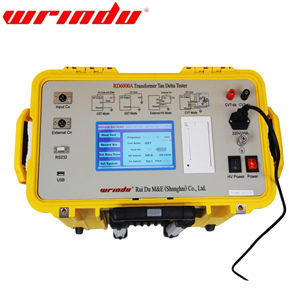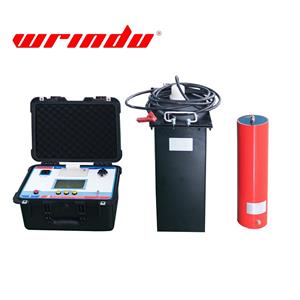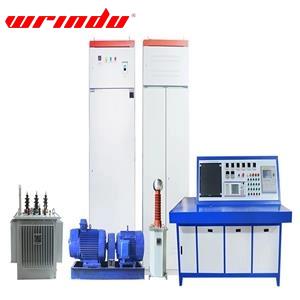You must know about withstand hipot testing
What is hipot testing?
The Hipot Test (short for High Potential Test), also known as Dielectric Withstand Test, checks the effectiveness of electrical insulation by applying high voltage to ensure no current flows between points. It's the opposite of a continuity test, which checks if current flows easily. The Hipot test ensures insulation can withstand normal voltage surges without failure.
This non-destructive test helps detect issues like damaged insulation, stray wires, contaminants, and improper spacing or tolerance errors in cables. It also identifies problems in the manufacturing process, such as inadequate creepage or clearance.
During the test, different types of current, like capacitive charging and leakage currents, are measured. After other tests like fault conditions or humidity tests, the Hipot test ensures that no degradation has occurred.
According to IEC 60950, the basic test voltage is 2 times the operating voltage plus 1000 V to account for normal voltage transients.
Common Testing Equipments Used for Hipot Testing
The Testing Equipments commonly used for high-voltage testing include series resonant devices, power-frequency AC withstand voltage test devices, and VLF test devices. Next, I will describe their similarities and differences.
Series Resonant Device
The series resonant device generates high voltage using the principle of electrical resonance. It is widely used for testing high-voltage power equipment, such as transformers and cables.
Components of a Series Resonant Circuit:
Inductance (L): The inductance in the series resonant device is typically made up of the test transformer and an inductor (usually a specialized coil). The magnetic field generated by the inductor produces a resonant frequency matching the capacitance.
Capacitance (C): The capacitance is usually provided by the device under test, such as the cable, motor, or transformer windings.
Resonant Frequency: The device adjusts the inductance and capacitance to reach a resonant state. When the circuit reaches resonance, the inductance and capacitance cancel each other out, producing a high voltage output.
How It Works
In a series resonant circuit, the inductance (L) and capacitance (C) interact to form a resonant state. When the power supply frequency matches the circuit's natural resonant frequency, the impedance is maximized, and the voltage is significantly amplified.
Resonant Voltage Amplification
The resonant circuit greatly amplifies the voltage. Due to resonance, the voltage increases, but the current remains low. This allows high voltage to be applied to the insulation of the device under test without overloading the power supply.
Adjusting Resonant Frequency
By changing the inductance or adjusting the input signal's frequency, the device can precisely control the output voltage. This enables the generation of higher voltage compared to traditional transformers for high-voltage testing.
Components of a Series Resonant Device
Low-Voltage Power Supply: Provides input voltage to the system.
Inductive Device: Usually consists of the test transformer and adjustable inductors, which adjust the frequency and generate the required high voltage.
Capacitor: The insulation of the device under test (e.g., cable or transformer winding) serves as the capacitor, determining the system's resonant frequency.
Measuring Equipment: Devices like voltmeters and frequency meters to measure test voltage and frequency.
Tests Performed Using a Series Resonant Device
Insulation Withstand Test for Power Cables: Used for testing high-voltage cables, especially for field withstand tests after installation.
Insulation Withstand Test for Transformers: High voltage is applied to test the insulation performance on both the high-voltage and low-voltage sides of the transformer, ensuring long-term insulation stability.
Insulation Test for Switching Equipment: Tests the insulation of circuit breakers, isolators, load switches, etc., to ensure safe operation under high voltage.
Partial Discharge Test for Electrical Equipment: High voltage is applied to check for partial discharge, which may indicate defects in the insulation.
Dielectric Loss (Tan Delta) Test for High-Voltage Equipment: Tan delta is measured during the test to assess the insulation condition. This helps detect insulation aging and identify potential issues early.
Differences in Choosing Between Series Resonant, Power-Frequency AC/DC Withstand Voltage Test Device and Very Low Frequency (VLF) Test Devices
Series Resonant Device: Ideal for high voltage, large capacity tests, such as cables and transformers, where minimizing current loss is important. It's suitable for testing large equipment.
AC/DC Withstand Voltage Test Device: A traditional and efficient choice for regular power equipment (e.g., transformers, cables, and switches) that operates under power-frequency conditions.
VLF Test Device: Best for field testing cables and already installed equipment, especially when assessing cable aging. It's particularly useful in DC power systems and low-frequency environments.
| Features | Series Resonant Device | AC/DC Withstand Voltage Test Device | VLF Test Device |
|---|---|---|---|
| Working Principle | Based on serial resonance, generates high voltage through low-frequency oscillation. | Increases voltage by transforming low-frequency AC to high voltage. | Generates low-frequency voltage for equipment testing. |
| Application Scope | High-voltage equipment, transformers, switchgear, etc. | Electrical equipment (transformers, cables, switches, etc.). | Cables, aging equipment, and DC power system tests. |
| Electrical Characteristics | Low frequency, high voltage, reduced current loss. | High voltage, low current, more efficient. | Low frequency, high voltage, suitable for testing aging cables. |
| Measurement Accuracy | High precision, able to ensure stable test results. | Moderate accuracy, suitable for general equipment testing. | High accuracy, suitable for environmental tests. |
| Testing Time | Relatively short, quick results. | Longer testing time, suitable for standard tests. | Longer testing time, suitable for long-duration tests. |
| Advantages | High voltage, low current, high efficiency, suitable for large equipment. | Simple operation, highly efficient, reliable for regular equipment. | Suitable for field testing, low power requirements, portable. |
| Disadvantages | Requires complex operation, equipment is large. | Needs larger equipment and more current. | Limited application, not suitable for large equipment. |
Click here to find information about Series Resonant Device. AC/DC withstand voltage test Device. VLF Test Device.
Related Articles
Common problems and solutions of series resonance withsatnd voltage test of transformer.
How to use VLF testing devices?
Reasons why series resonance test device cannot rise to the set target voltage.




